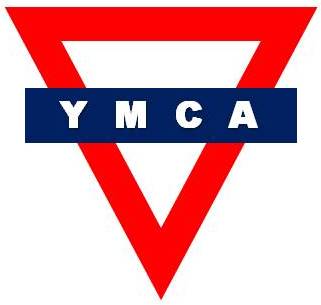The Founding of the YMCA
- 6th June 1844 -
For many people the letters YMCA conjure up images of the Village People singing a song of that name back in 1978. However, the history of the YMCA goes back exactly 100 years from my last blog on 6th June – D-Day. In many respects it was a different sort of D-day – a rescue not of a country, France, and the beginning of the end of the Nazis, but the rescue of a generation of young men who were coming to the great cities around England in search of work and riches in what has become known as the Industrial Revolution.
The only activities open to the young men then were visiting brothels and taverns and this was leading to a social and moral malaise, according to many at the time. Enter George Williams, the son of a wealthy farmer from Dulverton in Somerset – one of the last people you would expect of leading such a crusade. He had trained in Bridgewater as a draper before moving to London in 1842 to work in a drapery, later becoming the manager of a shop in St Paul’s Yard, near the cathedral of that name. He was a religious young man and attended the nearby congregational chapel.
 George was one of those concerned by the opportunities and pursuits of his fellow young people and, at the age of just 22, got a group of friends together to put on activities and bible studies for young men. The first meeting took place in his shop on June 6th. There is a plaque above the shop today. The aims were “The improving of the spiritual condition of young men engaged in the drapery, embroidery, and other trades." He wanted people who were healthy in body, mind and spirit – thus the logo of three sides.
George was one of those concerned by the opportunities and pursuits of his fellow young people and, at the age of just 22, got a group of friends together to put on activities and bible studies for young men. The first meeting took place in his shop on June 6th. There is a plaque above the shop today. The aims were “The improving of the spiritual condition of young men engaged in the drapery, embroidery, and other trades." He wanted people who were healthy in body, mind and spirit – thus the logo of three sides.
The idea of the Young Mens’ Christian Association spread to public lectures and classes. Reading rooms were opened with refreshment areas to help young men adjust to life in the city. In 1845 associations opened in Manchester and Leeds and by 1851 there were YMCAs in Australia, Belgium, Canada, France, Germany, the Netherlands, Switzerland, and the United States.
In 1873 the first holiday centre opened on the Isle of Wight which was so successful that a further 25 were opened around the country. The South African born Billy Butlin cottoned on to what was happening and opened the first of his holiday camps at Skegness. Within eight years they had opened their first gym and were incorporating fitness into their regime. A decade later the YMCA in the United States, under the Canadian Dr. James Naismith, had invented basketball soon to be followed by volleyball in 1895.
In 1908 the first Scout Groups were to meet at Birkenhead and Nottingham YMCAs followed four years later by purpose built hostels in London and Cardiff. During the war the association supported troops on the frontline and at railways stations in the UK. It set up an education programme for returning troops that eventually became the Army Educational Corps. 38,000 ex-servicemen were found employment by this arm of the organisation at a time when many men were wondering what their futures held post-war. They also played an active part in World War Two providing mobile canteens and refreshment to troops and helped displaced people, refugees and prisoners of war.
The Albermarle Report, commissioned by the Government in 1959, looked at the leisure facilities for young people and how poor they were. The YMCA developed Youth clubs as a result. A college, The George Williams College, was set up in 1970 to provide training for professional youth workers in London. They looked especially at unemployed and homeless people creating the YMCA Training for Life programme which gave vocational training to over one million people.
The total number of YMCA members now stands at over 58 million across 119 countries having adapted to the changing needs of young people. Little can George Williams have forecast that the meeting in his draper’s shop in 1844 would lead to the oldest and biggest youth organisation in the world.
As for George himself, he was knighted on the fiftieth anniversary of the founding in 1894 by Queen Victoria. He died in 1905 and was buried, appropriately enough, in St. Paul’s Cathedral and a stained glass window in his honour can be found in Westminster Abbey. A 22-year-old man set out with a vision, a care and a passion. He once described himself as “a careless, thoughtless, godless, swearing young fellow". With the idea of growth mindsets very much in vogue, surely here is an example of just that.


